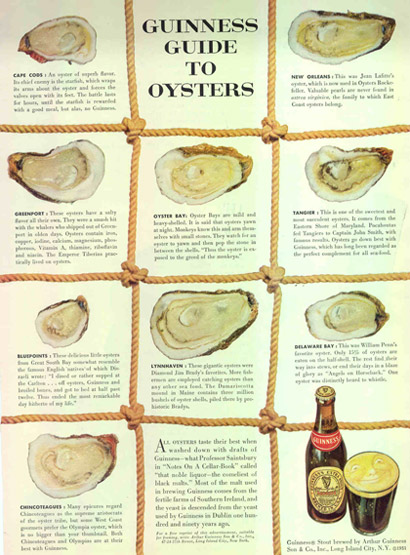More adjectives: 107 words to describe hop aroma and flavor.
Until robots take over our tasting world we’re left to consider how to communicate the aromas and flavors we experience with beer.
A review of “Perfumes: The Guide” in the current New Yorker magazine makes that point.
The words and the references are really useful only to people who have had the same experiences and use the same vocabulary: those references are to a shared basis of sensory experience and a shared language. To people who haven’t had those shared experiences, this way of talking can seem like horse manure, and not in a good way.
The book was written by Tania Sanchez and Luca Turin, and since Turin was the protagonist in the delightful book “Emperor of Scent” five years ago it gives me an excuse to quote this vaguely relevant passage:
“Look at beer, which is a very interesting cultural product. Beer smells like a burp. Gasses from someone’s stomach. Lovely. Again a product of fermentation, which is to say decay. Decay enhances smells and flavors, yet we have a sharp ability to identify decay, because decaying things will kill you. Bacterial and yeast decomposition.
“Which can give you ‘I wouldn’t touch that in a million years’ and, at the same time and in the same culture, mind you, ‘I will pay great sums to consumer Rodenbach,’ which is a miracle of a beer from Belgium. A miraculous, powdery apple flavor. Those Rodenbach yeast have an I.Q. of at least two hundred. Fucking genius yeast.”
Returning to the point. A shared tasting vocabulary serves a certain purpose. So I pass this along to do with as you please. It comes from the Merchant du Vin newsletter.
1. Words to describe malt flavors: Malty, biscuity, breadlike, grainy, rich, deep, roasty, cereal, cookie-like, coffeeish, caramelly, toffee-like, molasses-like, malt complexity, smoky, sweet, autumnal, burnt cream, scalded milk, oatmeal, rustic, layered.
2. Words to describe hop flavor and bitterness: Piney, citrusy, grapefruity, earthy, musty, spicy, sharp, bright, fresh, herbal, zippy, lemony, newly-mown lawn, aromatic, floral, springlike, brilliant, sprucelike, juniper-like, minty, pungent, elegant, grassy.
3. Words to describe fermentation flavors deriving from yeast: Fresh-baked bread, clovelike, bubblegum, yeasty, Belgiany, aromatic, tropical, subtle, fruity, clean, banana-like (and for some sour or extreme beers) horseblankety, earthy, musty.
4. Words to describe conditioning (carbonation): Soft, effervescent, spritzy, sparkling, zippy, pinpoint, bubbly, gentle, low carbonation, highly carbonated.
5. Words to describe body & mouthfeel: Rich, full, light, slick, creamy, oily, heavy, velvety, sweet, dry, thick, thin.
6. Words to describe warm ethanol (alcohol) flavors from strong beer: Warm finish, heat, vodka, esters, pungent, strength.
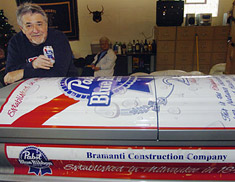 Did you hear the one about an Illinois man who plans to be buried in a coffin designed to look like
Did you hear the one about an Illinois man who plans to be buried in a coffin designed to look like 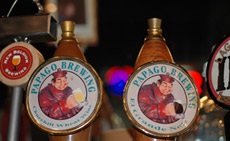 Kloth, as you may know, is the driving force beyond Papago Brewing, the Scottsdale, Ariz. beer establishment that’s as good as its considerable reputation. The beer there only gets better over a game of chess on the set Ron first used as a kid (really). As you may not know, Ron is the only one of the first five Certified Cicerones to have spent a night or three in our guest bedroom (the one with dozens of vintage hop boxes).
Kloth, as you may know, is the driving force beyond Papago Brewing, the Scottsdale, Ariz. beer establishment that’s as good as its considerable reputation. The beer there only gets better over a game of chess on the set Ron first used as a kid (really). As you may not know, Ron is the only one of the first five Certified Cicerones to have spent a night or three in our guest bedroom (the one with dozens of vintage hop boxes). 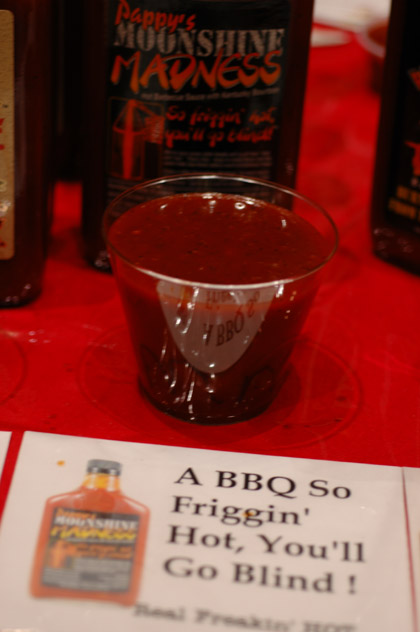
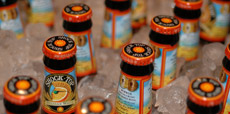 Yep, one of the reasons we moved to New Mexico was because we love the hot food.
Yep, one of the reasons we moved to New Mexico was because we love the hot food.